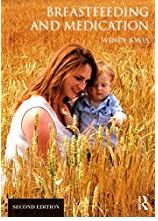More breastfeeding mums seem to have taken up running again or for the first time. We have all needed to take exercise in this strange world the past few years.
This is the information on glucosamine and chondroitin during breastfeeding – enjoy your running. Yes it is safe in breastfeeding :
https://kellymom.com/bf/can-i-breastfeed/lifestyle/mom-exercise/
Glucosamine
Glucosamine is either derived from shellfish or synthetically produced. The shellfish derived product should be avoided by anyone with a shellfish allergy.
It is most commonly used to treat osteoarthritis and joint pain or to prevent joint damage. A glucosamine derivative, N-acetylglucosamine, is a normal component of human breastmilk. Glucosamine occasionally causes stomach discomfort in adults but is generally well tolerated. There are no studies on levels in breastmilk but it is poorly absorbed and metabolised in the liver so levels absorbed by the breastfed baby are likely to be very low.
Chondroitin
Chondroitin is a mixture of large glycosaminoglycans and disaccharide polymers, usually derived from shark or bovine cartilage. It is most commonly used to treat osteoarthritis because it acts as a flexible connecting material between the protein filaments in cartilage.
Chondroitin is poorly absorbed orally with a bioavailability of about 10%. Its molecular weight averages 50,000 Daltons so is unlikely to be absorbed by breastfed babies at all.
It is well tolerated in mothers with occasional gastrointestinal upset reported. Although no studies exist on the use of chondroitin sulphate supplements during breastfeeding, small amounts occur naturally in breastmilk. Mothers of preterm infants excrete greater amounts of chondroitin into breastmilk than mothers of fullterm infants.The use of chondroitin by a nursing mother is unlikely to adversely affect the breastfed infant.
References
Coppa GV, Gabrielli O, Zampini L et al. Glycosaminoglycan content in term and preterm milk during the first month of lactation. Neonatology. 2011;101:74-76. https://pubmed.ncbi.nlm.nih.gov/21934331/
Hale TW Medications and Mothers Milk
LactMed https://www.ncbi.nlm.nih.gov/books/NBK501922/
